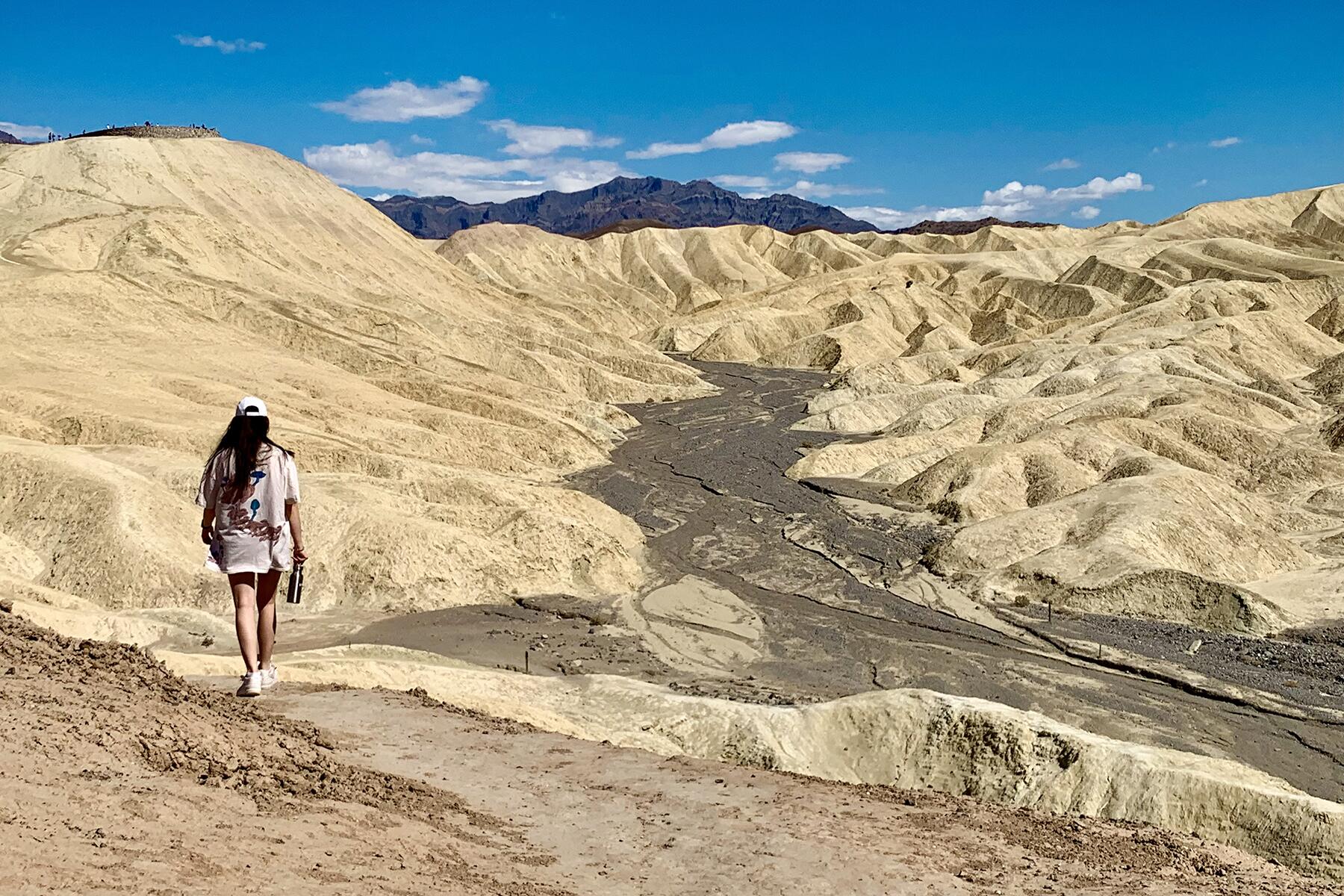Death Valley National Park
Death Valley National Park
The natural riches of Death Valley—the largest national park outside Alaska—are overwhelming: rolling waves of sand dunes, black cinder cones thrusting up hundreds of feet from a blistered desert floor, riotous sheets of wildflowers, bizarrely shaped Joshua trees basking in the orange glow of a sunset, tiny pupfish, and a dramatic silence.
This is a land of extremes of climate (hottest and driest) and geography. The park centers on Death Valley, which extends 156 miles from north to south and includes Badwater Basin, the lowest point in the USA (282 feet below sea level). Two mountain ranges border the valley: the Panamint on the west, where Telescope Peak juts more than 11,000 feet up from the valley floor, and the Amargosa in the east. Salt basins, spring-fed oases, sand dunes,...
Read MoreThe natural riches of Death Valley—the largest national park outside Alaska—are overwhelming: rolling waves of sand dunes, black cinder cones thrusting up hundreds of feet from a blistered desert floor, riotous sheets of wildflowers, bizarrely shaped Joshua trees basking in the orange glow of a sunset, tiny pupfish, and a dramatic silence.
This is a land of extremes of climate (hottest and driest) and geography. The park centers on Death Valley, which extends 156 miles from north to south and includes Badwater Basin, the lowest point in the USA (282 feet below sea level). Two mountain ranges border the valley: the Panamint on the west, where Telescope Peak juts more than 11,000 feet up from the valley floor, and the Amargosa in the east. Salt basins, spring-fed oases, sand dunes, deep canyons, and more than a thousand miles of paved and dirt roads punctuate the barren landscapes.
Humans first roamed this once-lush region around 10,000 years ago. The Timbisha Shoshone have lived here for more than a thousand years, originally along the shores of a 30-foot-deep lake. They called the area Timbisha for the red-hued rocks in the hillsides. Gold-rush pioneers looking for a shortcut to California traversed the barren expanse in 1849; some met their demise in the harsh environment, and those who survived named the place Death Valley. Silver and borax mining companies soon arrived on the scene. They didn’t last long (most had stopped operations by 1910), but they left ghost towns and ramshackle mines as evidence of their dreams.
In 1933, President Herbert Hoover proclaimed the area a national monument to protect both its natural beauty and its scientific importance. In 1994, Congress passed the California Desert Protection Act, adding 1.3 million acres and designating the region a national park. Today, Death Valley National Park encompasses nearly 3.5 million acres, 93% of which is designated wilderness.
Despite its moniker, Death Valley teems with life. More than a million visitors a year come here to view plants and animals that reveal remarkable adaptations to the desert environment, hike through deep canyons and up mountain trails, gaze at planets and stars in a vast night sky, and follow in the footsteps of ancient cultures and pioneers. They come to explore an outstanding, exceptionally diverse outdoor natural history museum, filled with excellent examples of the planet’s geological history. Most of all, they come to experience peace, quiet, and solitude in a stark, surreal landscape found nowhere else on Earth.








